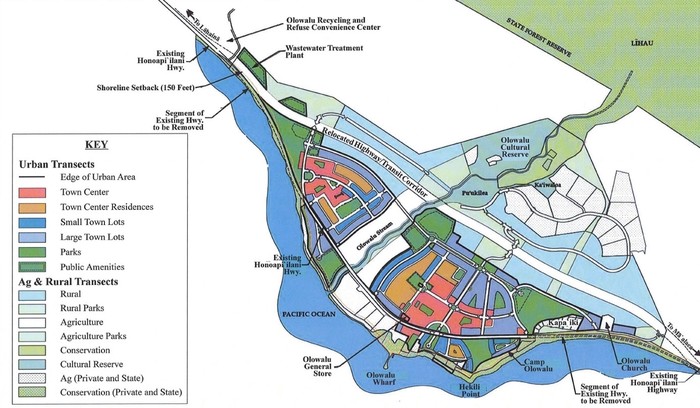Olowalu Town Nixed: Last month, at the end of a 12-hour-long hearing, the Land Use Commission refused to accept a final environmental impact statement for a residential development of 1,500 units in West Maui first proposed more than 10 years ago and formally submitted to the LUC in May 2010.
In its decision and order on the FEIS prepared for Olowalu Town and Olowalu Ekolu, the LUC presented a long list of concerns with the document. The first to be noted was the discrepancy in acreage of the projects. “In the petition, approximately 175 acres of land were proposed to be reclassified to the state Land Use Urban District and approximately 145 acres of land were proposed to be reclassified to the state Land Use Rural District. The FEIS now states that the Petition Area consists of approximately 434 acres, an increase of approximately 114 acres since the filing of the petition,” the LUC observes in a footnote to the findings of fact.
Then there was the fact that the traffic impact analysis report had undergone extensive revisions since the draft EIS was published in 2012, and the public had had no opportunity to review the changes; the failure of the petitioner to prepare an up-to-date archaeological inventory survey; the lack of any survey of existing recreational users of the coastline; and the failure to consider the sufficiency of potable and non-potable water for cultural or other uses, including taro cultivation; and no discussion of where drainage would flow or the location of retention basins.
Also, “petitioners stated that the realigned Honoapi`ilani Highway was to be initially a two-lane road then a four-lane roadway but did not give timing or cost estimates” and “Petitioners did not clearly state where in the FEIS measures were identified to ensure that traditional and customary cultural practices on the petition area will be preserved and protected.”
Although the LUC vote (six to one, with one abstention) was a setback to the developers, there are several options they can pursue to keep the petition alive. The EIS can be revised and resubmitted or the LUC decision can be appealed to the Environmental Council or Circuit Court.
Climate Change News & Events: Five years ago, the Federal Emergency Management Agency (FEMA) published its Climate Change Adaptation Policy statement that established an agency-wide directive to “integrate climate change adaptation planning and actions into agency programs, policies and operations.”
Last month, the agency released several fact sheets advertising the various types of climate resilient infrastructure projects it now provides grants for. The projects, called Climate Resilient Mitigation Activities, can include aquifer storage and recovery, flood diversion and storage, floodplain and stream restoration, and green infrastructure methods, which are sustainable approaches to “natural landscape preservation and storm water management that can be used for hazard mitigation activities as well as provide additional ecosystem benefits,” the agency states.
For more information, visit https://www.fema.gov/media-library/assets/documents/110202.
Mark Your Calendars: And in other climate change-related news, a number of events dealing with its impacts in Hawai`i will be held in the coming weeks and months.
On January 26, from 1 to 4 p.m., the state’s Interagency Climate Adaptation Committee (ICAC) will meet in the Land Board conference room at the Kalanimoku building, located at 1151 Punchbowl Street in Honolulu. On February 11, the ICAC has scheduled a Hawai`i Sea Level Rise Vulnerability & Adaptation workshop. For details, check climateadaptation.hawaii.gov. And on from March 14-17, the Pacific Risk Management `Ohana will hold its annual conference to discuss ways to build hazard-resilient communities.
Quote of the Month
“It is shameful that, at the moment, we have mechanisms in place requiring identification of ‘dolphin safe’ tuna that effectively blocks import and export of tuna in certain countries, yet we do not even have even a remotely similar measure for ‘human safe’ tuna.”
— Bubba Cook, World Wild Fund for Nature


Leave a Reply